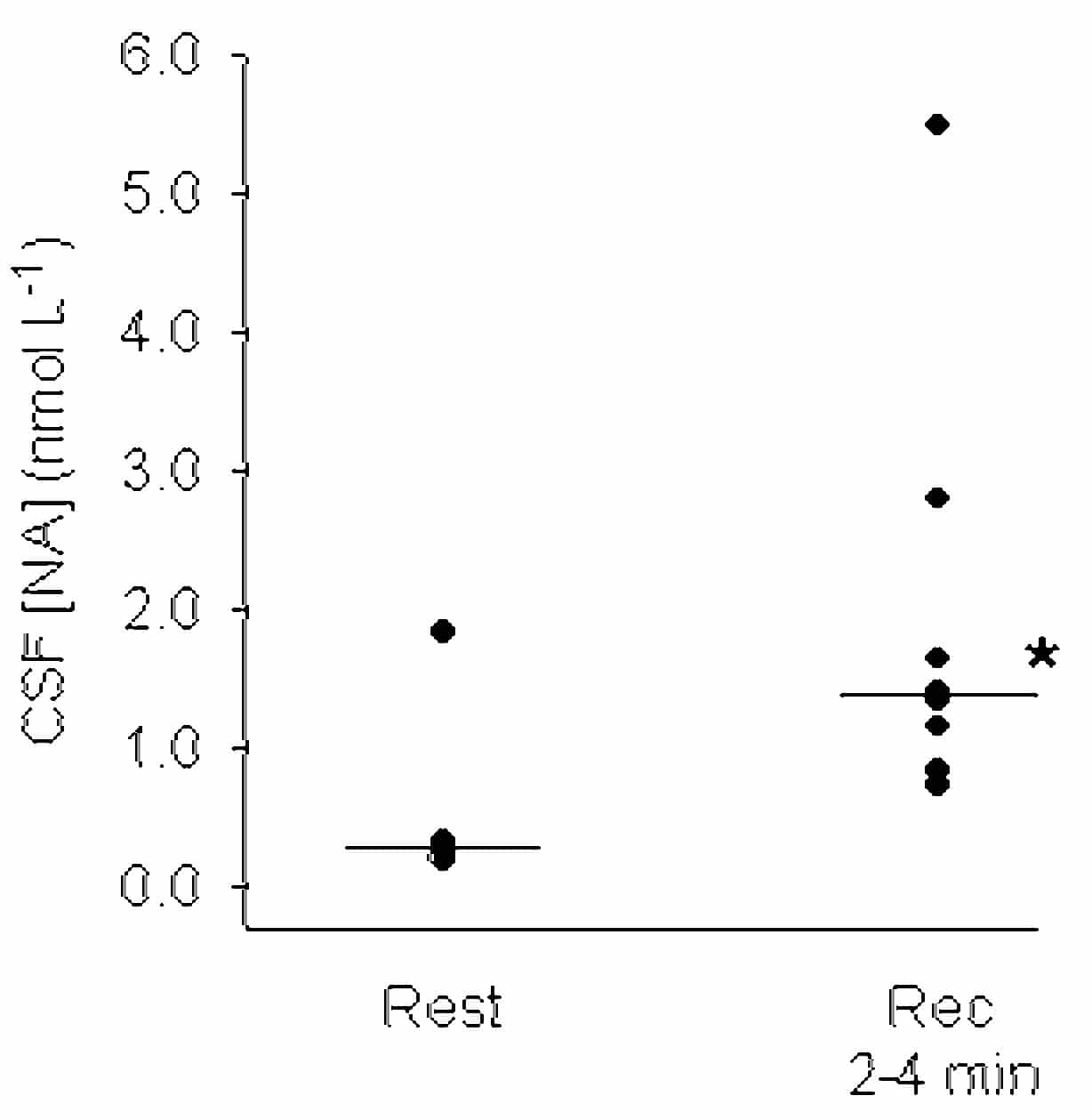During and especially after intense exercise the brain takes up carbohydrate in excess of O2 (Dalsgaard et al. 2002). This study evaluated the arterial to internal jugular venous differences and the cerebrospinal fluid (CSF) levels of hormones that may influence carbohydrate metabolism.
After approval by the Ethics Committee of Copenhagen (KF 01-034/02) and written informed consent, nine healthy subjects of median age 26 years (range 23-28) performed about 12 min exhaustive exercise. The CSF was drained immediately post-exercise by a lumbar puncture, while CSF at rest was obtained from 6 other age matched subjects. Included hormones were noradrenaline (NA), adrenaline (A), insulin, insulin-like growth factor (IGF) I, and cortisol. Also determined were interleukin (IL) 6, tumour necrosis factor (TNF) α, as well as ammonium (NH4+).
Exercise increased the arterial levels of NA and A (Fig. 1A), but there was no cerebral uptake. Yet, following exercise CSF NA was 1.4 (0.73 -5.5) nmol l-1 and higher than at rest, 0.3 (0.19 -1.84) nmol l-1 (Fig. 1B; P < 0.05), whereas A did not show. Arterial NH4+ increased with exercise and equally for the uptake of NH4+ from 1 (-12 – 5) to 17 (5 – 41) µmol l-1. Conversely CSF NH4+ was reduced to 7 (0-10) vs. 11 (7 -16) µmol l-1 (P < 0.05). Plasma insulin was low while the brain took up a surplus of carbohydrate, but it increased to above resting levels after 30 min. Other arterial variables were elevated with exercise, but there was no cerebral uptake or changes in CSF concentrations.
The findings suggest that a maximal exercise bout is not associated with IL-6 or TNF-α accumulation, in or release from the brain. However, NA seems to play an intrinsic role for the cerebral response to exercise, and a cerebral uptake of NH4+ may be of value for amino acid metabolism within the brain. In contrast, blood borne catecholamines, cortisol, IGF-I are seemingly unimportant. Notably, during and immediately after exercise the brain appears to take up glucose independently of insulin.

